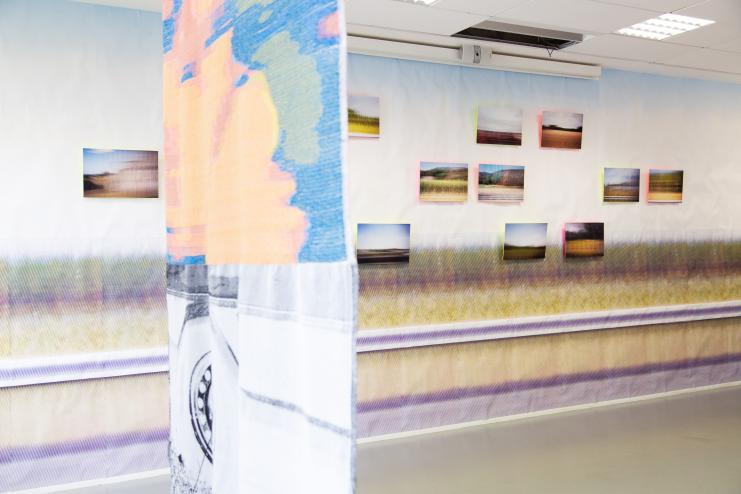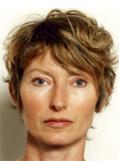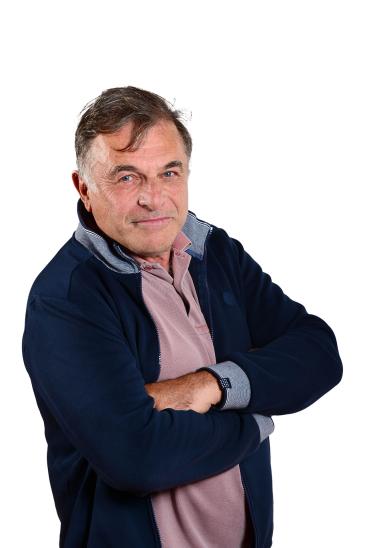Printed image

The “raison d'être” of the Printed Image department is to train the creators of unique and multiple images fit for our contemporary world, focusing on their unique identities and their commitment as authors or artists.
- 1st semester: pedagogy focuses on the development of a personal project with a guest artist, augmented by a collective edition and concluding with an exhibition. Through this very open printed image work, students are encouraged to carry out more in-depth research and self-analysis. In addition, a drawing and contemporary writing course will take place throughout the year.
- 2nd semester : it focuses on writing and completing the dissertation in the best possible conditions. The Drawing course takes the form of short, intense workshops, while an editorial and graphic design support class for the dissertation allows students to express themselves fully in the physical form of the book object in which they present their masters research.
Geneneral presentation
During this course, students will encounter and then master all of the means and methods of conceiving and producing creative images intended to serve a purpose, an interpretation of the world or a narrative.
Our pedagogy emphasizes not only the practice of drawing and mark making, but also the expression and understanding of today's visual languages, by exploring the diversity of text-image relationships, and the shapes and objects of the printed image in all artistic and editorial fields, both paper and digital.
The conection between the work of design and creation and the issues of multiplication, printing and publishing, is explored via close partnerships with the different workshops available to us within the school: screen printing, engraving and pre-press.
The acquisition of crucial technical skills, and the mastery of both the design process and digital processing with a view to the optimal exploitation of original images in print are at the heart of this professional training.
Critical thinking on the issues of the contemporary creative image and publishing in the broadest sense is fostered throughout the student's journey
Undergraduate cycle
These first two years are structured to allow students to acquire the means and skills to express their identity and individuality with freedom and confidence. This includes addressing the challenges of creative work in our contemporary society.
The 2nd year allows the student to discover all of the elements of the printed image. Through a set of connected coursework objectives, the educational journey progresses from experimentation to project, exploring and assimilating the fundamental grammars specific to printed images (screen printing, engraving, digital, etc.) into a set of creative tools unique to each student.
Multiple means of expression and approaches to creation are developed in a spirit of open research and invention, with an inquisitive eye fixed on contemporary interests and subjects, all the while working toards an understanding and mastery of the process of producing images, from their conception through to the printed version. Students will discover creative methodologies for developing single and multiple images or complete narrative sequences, as they encounter the different relationships and potentials connecting text and image.
The 3rd year delves deeper into the different editorial and artistic fields of the printed image with illustration work, the practice of engraving and project coursework centering on the experimental book allowing students to encounter and explore different publishing or artistic issues.
Workshops become creative tools freely used in the service of a more autonomous production which serves true authorial work.
This personal development is accompanied by a theoretical framework which in the last part of the year will provide students with the tools they need to choose the subject of their masters dissertation for the following year.
The specific editorial project which culminates and validates ENSAD's undergraduate cycle verifies that all of the knowledge acquired during the first two years in the Printed Image department is securely in place so that students are equipped to progress (if they so wish) into the masters cycle.
masters cycle
In the 4th year, the emphasis is placed on personal research and longer projects, preparing the student for greater autonomy and the diploma year to follow.
It is also the year during which the masters dissertation is researched and written. This dissertation is the result of autonomous personal research and writing practice, monitored by a supervisor and defended on front of a committee at the end of the school year. The research methodology assimilated during this project and the problematique addressed by the student constitute an important capital, crucial for the development of the diploma project to come in 5th year.
The 4th year may include a study trip abroad to a partner school (Erasmus), generally in the first semester. The year is divided into two semesters with distinct rhythms :
The 5th year is devoted to a single major Printed Image diploma project concluding with a defense of the project in front of a committee comprised of internal teachers and external creative personalities.
This year is an opportunity for students to deepen their personal approaches as authors and artists. The project can open up to the outside world or be worked on in collaboration with a student from another sector, in a hybridization of practices.
It measures itself both against the challenges of contemporary creation and professional requirements. In its conceptualization and in the quality of its achievements, the diploma project demonstrates the skills and know-how of the student and their position as creators.
Teachers
| Nom | Fonction |
|---|---|
Loren Capelli
Loren Capelli |
Non renseigné |
Katy Couprie
Katy Couprie
InformationsA publié une trentaine d'ouvrages à ce jour dont : |
Auteur-illustrateur,plasticienne, graveur et photographe |
Iris Levasseur
Iris LevasseurNée à Paris en 1972, Iris Levasseur vit et travaille à Arcueil. Son univers pictural est un mélange étrange de pesanteur et de légèreté, de réalité humaine et de rêves. En peintre chorégraphe, elle questionne les corps et leur évolution dans l'espace, à travers des scènes monumentales aux interprétations ouvertes qui imposent leur présence physique au spectateur. Les compositions dans lesquelles elle met en jeu ses figures se réfèrent à des situations d'échanges violents, de dépositions dramatiques et d'abandons insondables du corps. Son regard sur le monde qui l’entoure est primordial et elle tire son inspiration de l’observation quasi quotidienne de zones péri-urbaines, d’où l’importance de certains détails comme les vêtements de ses personnages. Les textures employées ont pour effet de suggérer une instabilité, parfois même un malaise. Iris Levasseur est représentée à Paris par la galerie Odile Ouizeman depuis 2007 et par la galerie Iragui a Moscou. Elle a bénéficié de nombreuses expositions dans des Centres d’art, Frac et Musées. Ses oeuvres figurent dans d’importantes collections privées. Elle a participé aux expositions abordant le renouveau de la peinture figurative en France : Génération 70, Collection 3, d'Après la ruine, La belle peinture est derrière nous. |
Artiste plasticienne |
Christophe Naux
Christophe Naux
Depuis 1990 création de l'atelier de création graphique "jour ouvrable" Design graphique et communication visuelle, affiche et campagne de communication, logotype, typographie, et édition pour des institutions et grandes entreprises - (Ministère de la culture et de la communication, Musée national Jean-Jacques Henner, Groupe BNP Paribas, CCIP, groupe ESCP-EAP, HEC, Première Vision, Ville de Nantes…) 1990 - diplômé AII (atelier d'images informatiques) diplômé EnsAD 1989 - Graphisme |
Graphiste |
Lucile Piketty
Lucile PikettyEnseignante en gravure. |
Non renseigné |
Mémoires
| Étudiant.e.s | Titre du Projet | Année |
|---|